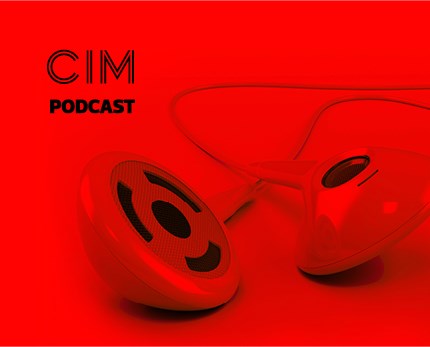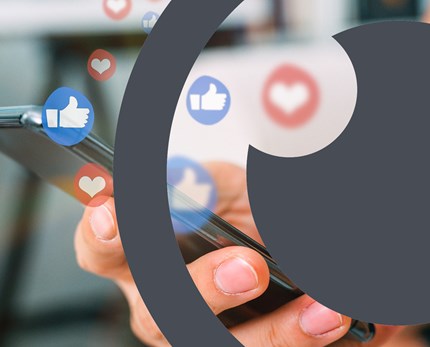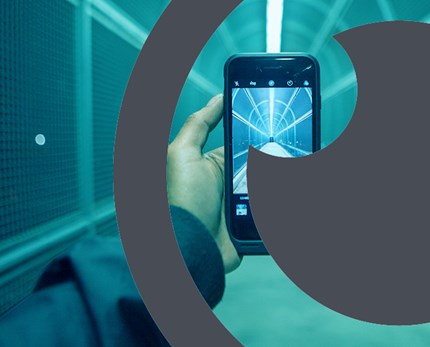Where does influencer marketing go next?

- 22 November 2019
Sponsored Instagram photos are getting expensive. Go-ahead marketers should also be looking for new ways to interact with influencers and their vast audiences.
A report by marketing platform Izea recently found brands are paying significantly more for sponsored photos from Instagram influencers than they did half a decade ago. In 2014, the average price of a pic was just over £100. Today, it is almost £1,300. Who said influencers had a trust problem?
“There’s no doubt influencer marketing is the hot channel right now,” says CIM’s Adam Pyle. “Just look at the impact of the recent boxing match between KSI and Logan Paul. To younger generations, YouTube stars are some of the most famous people on the planet. That fight alone has introduced boxing to a whole new audience.”
Because influencer marketing generally targets a younger demographic than traditional mediums, it can be a little too easy for brands to jump into it with wide eyes and open wallets. “It’s an easy option,” says Pyle. “Younger consumers have pester power on their side and tend to be loyal, so brands see potential long-term returns on investment.” This is especially true right now: brands themselves are losing influence among consumers, so the opportunity to reach out via a trusted or ‘authentic’ figure like an influencer can look like a shot in the arm for them.
“Sponsored photos and posts have worked well in an era when the hard sell is not cutting through for brands,” says CIM’s Ally Lee-Boone. “Influencers offer face-to-face interactions with a consumer, which is essentially what marketers have been chasing for a long time. This is simply a new kind of celebrity endorsement that, in the best cases, also offers a measurable ROI.”
But not all cases are the best cases. And, as the price of a sponsored photo has skyrocketed, the landscape has changed. “Sponsored content has become much more embedded,” says Lee-Boone. “It has become an integral part of the rhetoric, style and overall milieu of the most popular social media platforms.” For everyone involved – influencers, consumers and brands – clarity around what is and isn’t sponsored has become more important.
Thus, the Advertising Standards Agency, working with the Competition and Markets Authority, issued its first Influencer’s Guide last year. It became illegal for brands or individuals to post sponsored content without disclosing it as such.
“Regulation should help the good actors in the market,” says Lee-Boone. “What we have at the moment doesn’t cover all of the problems with influencer marketing, but it can start to persuade more businesses that they are not entering a wild west of fake followers, phony engagement, ever-changing algorithms and ‘spon cons’.”
Most of those issues are well known, but the ‘spon con’ is worth noting because it can be difficult for brands to spot and can do them significant damage. It is the dark side of ‘fake it ’til you make it’: unscrupulous influencers presenting non-sponsored content as sponsored because they want a positive brand association that might tempt other businesses to work with them.
Despite these risks – and we haven’t even mentioned the ‘cancel culture’ that can destroy an influencer’s business overnight, with fallout for associated brands – the price of a sponsored photo has risen dramatically. That’s because, says Lee-Boone, “Done right, with a carefully chosen influencer partner – someone with real clout who’s a good brand match – a sponsored photo can still justify its outlay.”
The price rises do, however, threaten to rule small and medium-sized businesses out of the market. These same firms can also struggle with the ‘always on’ culture around social media. A successful bit of sponsored content can lead to round-the-clock interactions with consumers – or unexpected spikes in activity when an older post is recycled. Not all firms have the capacity to cope with such events.
But they can still prepare for them. An influencer marketing plan should look a lot like a traditional marketing plan. “Careful research and analysis come first,” says Pyle. “Once the campaign is live, businesses must be agile because they’ll need to adjust to a volatile environment.”
The final ingredient, of course, is a dash of creativity. Influencer marketing is not just about big-budget YouTube videos and Instagram posts. For example, nano-influencers – those with fewer than 1,000 followers on a given platform – offer affordable, closely targeted opportunities that may benefit the small and medium sized businesses priced out by the likes of Zoella. Or, as we saw with the KSI-Logan Paul mega-fight, influencers can be brought out of their natural social-media home and into real life – or at least onto the telly.
Even though it might seem like digital is the only ad channel sometimes, traditional channels like television are still an essential part of brand building. In the face of those sky-high Instagram prices, crossing between the channels like those duelling YouTubers could become an even more appealing option.

- 0 views

 FAQs
FAQs
 Log in
Log in
 MyCIM
MyCIM







